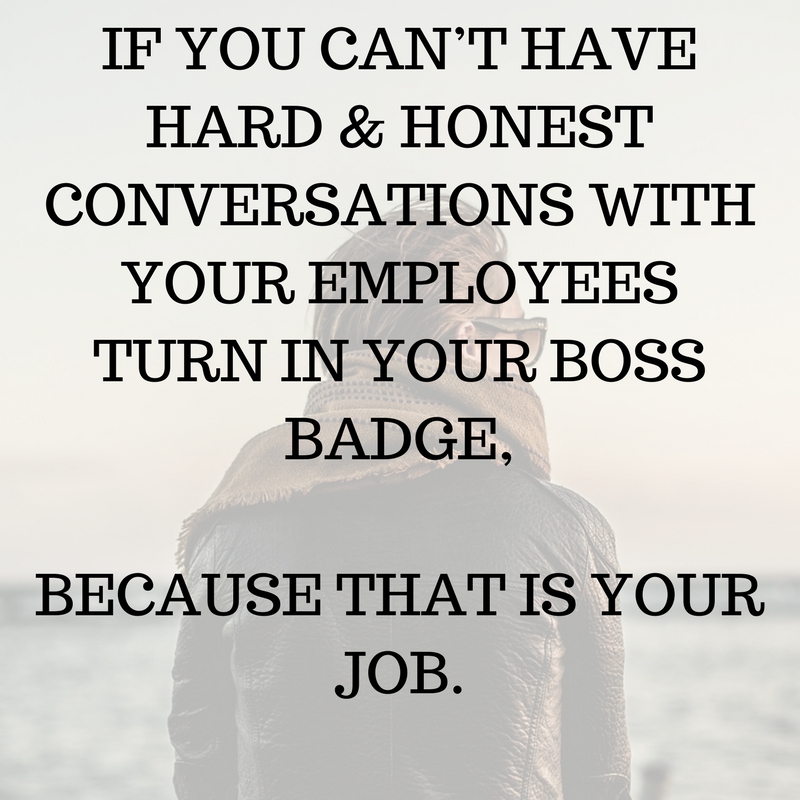Should A Servant Leader Ever Fire Someone? Yes! – And Here’s How & Why
While teaching leadership at Mount Royal University, my class had a great discussion about Servant Leadership and discipline.
Read about the myths of servant leadership
We explored one student’s situation: She has an employee who was good at her job but had a toxic and nasty attitude towards her employer, her co-workers and her work.
Sometimes, angry and negative people appear to do a good job, always at work, always on time. They are careful not to be too critical when supervisors or managers are around but are quick to spread rumours and try to supersede management at their discretion.
As we talked, I suggested that the employee was good at her tasks; but terrible at her job.
Leaders who struggle with effectiveness misconstrue servant leadership as never having to enforce a standard or discipline an employee.
Servant Leaders maintain standards and team norms to maintain high employee engagement and, in turn, does not allow mediocrity.
By allowing this miserable person to carry on without consequences creates mediocracy throughout your team.
Can You Fire a Poisonous Employee?
The short answer is yes.
But this is a time to get help.
You needed to get your boss and HR team involved. There are legal, labour-relations and possible human rights risks to the whole organization by mishandling firing someone. So be careful.
More importantly, the ‘problem’ employee needs to be treated fairly and with respect.
There is a possibility they have never been called out on their behaviour. Maybe, just maybe, with the right coaching, mentoring and good performance management you can help turn this person around.
To be honest, the odds of rescuing the employee are poor, but they may deserve the opportunity to improve their performance.
Step One: What to Say When Sitting Down for a First Meeting
While you may have counselled the employee in passing (“Hey, I noticed you were very negative at that meeting”), this is the time for pointed and directed information.
It is possible that they don’t realize just how negatively they are coming across to co-workers, so ask questions and find out what they are thinking.
Some approaches work better than others, but using the model of Facts, Feelings and Future is useful when having awkward conversations.
Try this script:
“I’ve noticed you are unhappy and speak quite negatively about your job and the other people who work here. For instance, I’ve noticed that while you’re always polite face to face, you’ll say negative things behind people’s backs.”
“Part of your job is building good relationships with co-workers, and your behaviour undermines this. What can I do to help you in this area?
The question at the end will allow your employee to speak up and share their grievances, which, most likely they will have. Here’s the thing: Be compassionate.
But at the end of all the sympathy and compassionate communication, you need to come to this: “Regardless, the behaviour is inappropriate in this office. We value your work, and we don’t want to lose you, but if you cannot pull this together, we will terminate your employment.”
Document the time, date, and content of the discussion. At this stage, you can present them with an official performance improvement plan document that details what is expected.
Step Two: Implement a Performance Management Plan with the Employee
You want to implement a Performance Management Plan that stresses progressive discipline.
Read about performance agreements and charters
This is where you follow a series of steps, with the idea that if the employee either improves or is terminated.
Step Three: Follow up
You should never expect instant perfection from an employee in the performance improvement process. After all, it takes an effort to change, and it took a long time to get here.
This is precisely the time when you must become a micro-manager. If you notice poor behaviour, correct it at the moment.
Read why micromanagement is a good thing
Regardless schedule a formal meeting every two-weeks during the performance management plan, if they are making significant progress, congratulate them. If they are not making progress, this is where the “progressive” part of progressive discipline kicks in.
Present them with a written warning. This should include details of the problems they need to resolve as well as the information that if their behaviour does not improve, your organization will suspend them and then terminate their employment.
Explain that this warning is being placed in their employee file. Ask them to sign to indicate that they have received this warning. They may object, saying that they disagree with what is written. You can explain that their signature doesn’t mean agreement, but rather that they received it.
Step Three: Termination
If the behaviour does not improve, it’s time to let your negative employee go.
You might be tempted to keep them on, understand that if you do not act, you will have no power over this employee ever again. They will know that they can do whatever they want to, and you won’t do much.
You may also have to provide some amount of severance – Get legal or HR advice. It is galling to pay a problem employee on their way out the door. But remember the organization failed the person by misfiring or not managing them properly, and a small severance may show good-faith if the employee decides to take legal action.
Final Thoughts
If you say, “But I can’t afford to lose them,” think again.
Negative employees who gossip are damaging to your whole department. Your other employees are more likely to quit and are not as engaged as they would be if they were in a functional department.
The Servant Leader owes it to all employees to take care of this poisonous employee, which means firing them if they either refuse to or are unable or unwiling to change.





